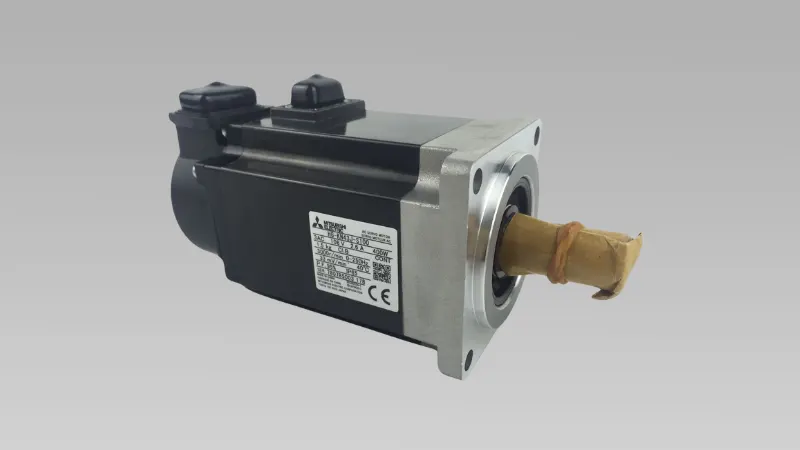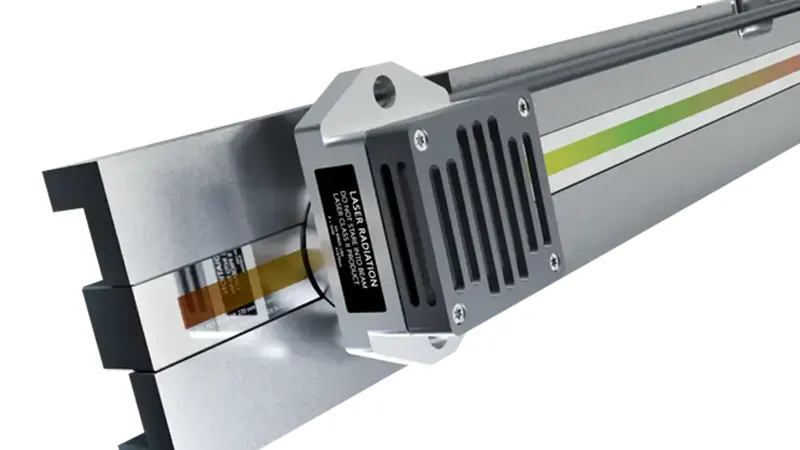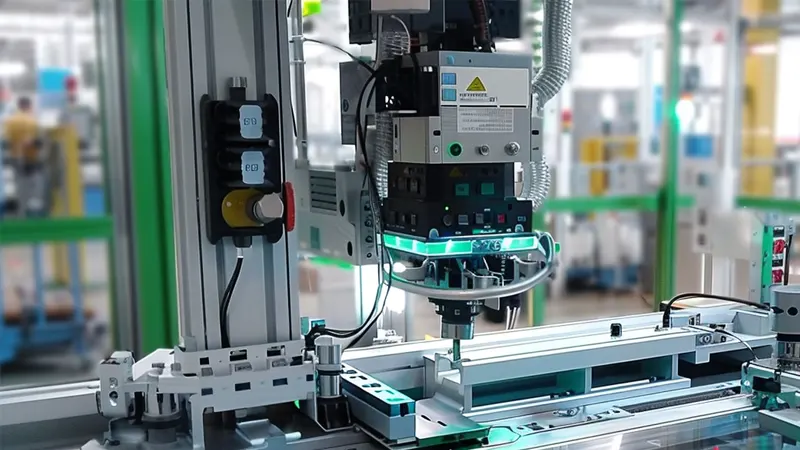5 tipos de codificadores em servo motores que você precisa conhecer
Neste artigo, detalharei os diferentes tipos de codificadores usados em servo motores de uma forma simples e fácil de entender.
Índice
Por que os codificadores são importantes em servo motores?
Ao contrário dos motores de passo, os servomotores requerem controle de malha fechada, que recebe continuamente sinais de feedback para controlar velocidade, ângulo e posição precisamente. Os codificadores agem como os olhos do sistema servo, monitorando o movimento do motor em tempo real e garantindo que ele siga as instruções fornecidas com precisão.
Sem codificadores, o controle do servo motor se tornaria impreciso. Os codificadores são cruciais em ambientes complexos como linhas de produção automatizadas e robôs médicos, ajudando a evitar erros e garantindo eficiência operacional e segurança.
1. Codificador Incremental
Os codificadores incrementais precisam de um ponto de referência cada vez que eles começam a registrar mudanças de movimento. Eles são adequados para aplicações onde o rastreamento de posição de alta precisão não é necessário, como linhas de embalagem ou equipamentos de depósito.
Características:
- Requer retorno após cada ciclo de energia.
- Usado principalmente para monitoramento de velocidade, posicionamento não preciso.
| Comparação | Prós | Contras |
|---|---|---|
| Caso de uso | Baixo custo, alta flexibilidade | Precisa de recalibração após perda de energia |
| Sinal de feedback | Monitoramento de velocidade em tempo real | Não é possível rastrear a posição diretamente |
2. Codificador Absoluto
Os codificadores absolutos retêm dados de posição atual mesmo após perda de energia, eliminando a necessidade de homing. Eles são comumente usados em robôs cirúrgicos ou robôs de fabricação de automóveis, garantindo que o equipamento possa retomar as operações sem erros após uma reinicialização.
Características:
- Fornece informações precisas rastreamento de posição.
- Garante reinicialização suave após falhas de energia ou interrupções do sistema.
| Caso de uso | Aplicação típica |
|---|---|
| Tarefas de alta precisão | Equipamentos médicos, automação de precisão |
3. Codificador Linear
Os codificadores lineares monitoram movimentos em linha reta, como em máquinas de corte a laser ou sistemas de triagem automatizados. Eles garantem um posicionamento preciso mesmo em altas velocidades, tornando-os ideais para ambientes que exigem velocidade e precisão.
4. Codificador rotativo
Os codificadores rotativos monitoram a rotação dos eixos, convertendo a direção do movimento do eixo em sinais digitais que os sistemas de controle podem interpretar para velocidade e posição.
Os codificadores rotativos são frequentemente integrados aos motores para fornecer feedback preciso, mesmo durante operações de alta velocidade.
5. Codificadores ópticos, magnéticos e capacitivos
Os codificadores também são classificados por suas tecnologias de detecção:
- Codificadores ópticos: Alta precisão, mas sensível à poeira.
- Codificadores magnéticos: Forte anti-interferência, adequado para ambientes hostis.
- Codificadores capacitivos: Rápido e acessível, mas menos preciso que os codificadores ópticos.
Como escolher um codificador para meu motor?
Aqui estão os principais fatores a serem considerados ao selecionar um codificador:
Identificar as necessidades da aplicação
Escolher codificadores absolutos se você precisa monitorar posições exatas. Use codificadores incrementais se o monitoramento de velocidade for o requisito principal.Considere os fatores ambientais
Em ambientes empoeirados ou úmidos, codificadores magnéticos ou aqueles com uma classificação IP alta (por exemplo, IP68) são mais adequados. Para tarefas de alta precisão, codificadores ópticos são recomendados.Capacidade de recuperação de energia
Se o sistema precisar reter dados de posição após uma queda de energia, codificadores absolutos são essenciais.Requisitos de precisão e resolução
Aplicações como Máquinas CNC ou robôs médicos exigem codificadores de alta resolução (por exemplo, codificadores absolutos de 24 bits). Aplicações menos exigentes podem usar codificadores de menor resolução.Compatibilidade de interface e comunicação
Garantir a interface do codificador (por exemplo, RS485, barramento CAN ou analógico) corresponde ao seu sistema de controle.Facilidade de instalação e manutenção
Projetos modulares fáceis de instalar e manter podem aumentar a eficiência em sistemas de automação complexos.
Perguntas comuns sobre servo motores e codificadores
1. Que tipo de codificador é usado em um servo motor?
Os servomotores normalmente usam incremental e codificadores absolutos. Os codificadores incrementais rastreiam o movimento e a velocidade relativos, enquanto os codificadores absolutos armazenam dados de posição precisos, mesmo durante a perda de energia.
2. Quais são os três tipos básicos de codificadores?
Codificador incremental: rastreia o movimento relativo e precisa de retorno.
Codificador absoluto: retém dados de posição em todos os ciclos de energia.
Codificadores rotativos e lineares: medem movimentos angulares e lineares, respectivamente.
3. Um servo motor pode funcionar sem um codificador?
Enquanto alguns sistemas servo simples usam controle de malha aberta, a maioria requer feedback de circuito fechado para precisão. Operar um servo motor sem um encoder pode comprometer o controle de velocidade e posição.
4. Qual é a diferença entre codificadores rotativos e lineares?
Codificador rotativo: mede ângulos ou velocidades de rotação, normalmente usado em eixos de motor.
Codificador Linear: Monitora o deslocamento linear, ideal para cortadores a laser ou máquinas CNC.
Potencialize seus projetos com servos Omron, Mitsubishi e Schneider originais e novos – em estoque, prontos agora!
Conclusão
Selecionar o encoder certo é essencial para otimizar a velocidade, precisão e confiabilidade em servomotores. Para projetos que exigem alta confiabilidade, encoders absolutos são recomendados, pois eles mantêm os dados de posição mesmo após a perda de energia. Embora possam custar mais, eles aumentam a eficiência operacional e a segurança.
Procurando por servos novos e originais para seus projetos? Na Kwoco, temos em estoque os servos mais recentes das principais marcas como Omron, Mitsubishi, e Schneider. Compre com confiança — envio rápido, qualidade garantida! Compre agora
Contate-nos
Basta preencher seu nome, endereço de e-mail e uma breve descrição de sua consulta neste formulário. Entraremos em contato com você em até 24 horas.
Você também pode achar esses tópicos interessantes
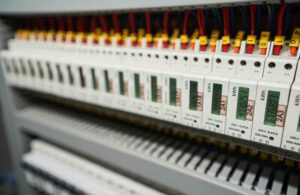
Guia de programação PLC: Master Industrial Automation
Você está procurando entender o mundo dos Controladores Lógicos Programáveis (PLCs) e como eles revolucionam a automação industrial? Este guia abrangente o guiará por tudo o que você precisa saber sobre programação de PLC, desde conceitos básicos até técnicas avançadas, ajudando iniciantes e profissionais experientes a aprimorar suas habilidades de automação.

Como escolher uma fonte de alimentação para um CLP?
Como escolher uma fonte de alimentação para um CLP Quando se trata de automação industrial, escolher a fonte de alimentação certa
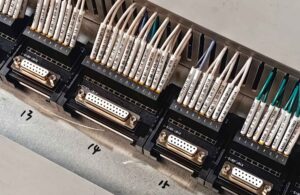
Guia passo a passo para programação de PLCs Omron para iniciantes
Controladores Lógicos Programáveis (PLCs) são componentes essenciais na automação industrial, e os PLCs Omron estão entre os mais amplamente usados na indústria. Se você é novo na programação de PLC, este guia passo a passo o guiará pelos fundamentos da programação de PLCs Omron, ajudando você a começar com confiança.

